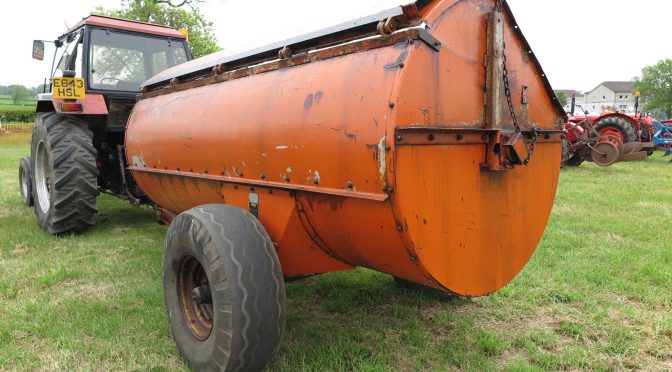One of the important jobs to prepare the land for spring was spreading dung on the land.
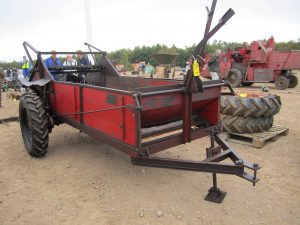 In 1908 Stephens’ Book of the Farm wrote: “carting manure-in hard frost, when the plough is laid to rest, or the ground covered with snow, and as soon as “By frequent hoof and wheel, the roads A beaten path afford”, farmyard manure is carried from the courts, and placed in large heaps on convenient spots near or on the fields which are to be manured in the ensuing spring. This work continued as long as there is manure to carry away, or the weather is suitable.”
In 1908 Stephens’ Book of the Farm wrote: “carting manure-in hard frost, when the plough is laid to rest, or the ground covered with snow, and as soon as “By frequent hoof and wheel, the roads A beaten path afford”, farmyard manure is carried from the courts, and placed in large heaps on convenient spots near or on the fields which are to be manured in the ensuing spring. This work continued as long as there is manure to carry away, or the weather is suitable.”
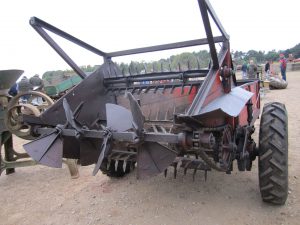 The essential tools were forks, dung forks and carts. In 1886 forks could be supplied by makers such as Spear & Jackson (well known for its garden grapes and other hand tools) and local furnishing ironmongers.
The essential tools were forks, dung forks and carts. In 1886 forks could be supplied by makers such as Spear & Jackson (well known for its garden grapes and other hand tools) and local furnishing ironmongers.
The development of the tractor allowed for the mechanisation of working with dung. Fore loaders allowed the task of emptying the 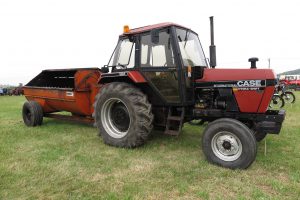 cattle court ad other sheds easier to undertake. In 1952 all of the makers of hydraulic, front end tractor mounted loaders were English, and included Harry Ferguson Ltd, Coventry, and W. E. Bray & Co. Ltd. Isle worth, Middlesex.
cattle court ad other sheds easier to undertake. In 1952 all of the makers of hydraulic, front end tractor mounted loaders were English, and included Harry Ferguson Ltd, Coventry, and W. E. Bray & Co. Ltd. Isle worth, Middlesex.
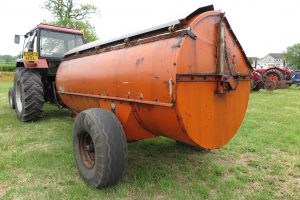 Likewise the spreaders for spreading farm yard manure were all made by English companies in 1952. They included ones made by Atkinson’s Agricultural Appliances Ltd, Clitheroe (also well-known for its lime spreader), bamfords Ltd, Uttoxeter, E. H. Bengal & Co Ltd, Heybridge, maldon, Dening & Chard (1937) Ltd, Chard, Harry Ferguson Ltd, Coventry, International harvester Company of Great Britain Ltd, London,
Likewise the spreaders for spreading farm yard manure were all made by English companies in 1952. They included ones made by Atkinson’s Agricultural Appliances Ltd, Clitheroe (also well-known for its lime spreader), bamfords Ltd, Uttoxeter, E. H. Bengal & Co Ltd, Heybridge, maldon, Dening & Chard (1937) Ltd, Chard, Harry Ferguson Ltd, Coventry, International harvester Company of Great Britain Ltd, London, 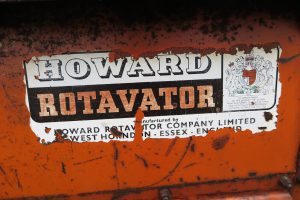 Massey Harris Ltd, Manchester, salopian Engineers Ltd, Salop, and W. B. Wild & Co. Ltd, London. It is interesting to note the tractor manufacturers making implements and machines for their tractors. Their spreaders generally had a capacity of between 35 and 40 cwt.
Massey Harris Ltd, Manchester, salopian Engineers Ltd, Salop, and W. B. Wild & Co. Ltd, London. It is interesting to note the tractor manufacturers making implements and machines for their tractors. Their spreaders generally had a capacity of between 35 and 40 cwt.
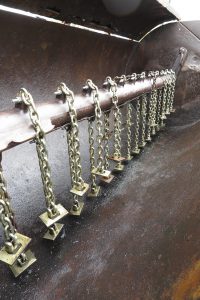 In later years, larger spreaders allowed for the easier handling and spreading of larger quantities of manure. They revolutionised a job that had been highly labour intensive and heavy on farm resources.
In later years, larger spreaders allowed for the easier handling and spreading of larger quantities of manure. They revolutionised a job that had been highly labour intensive and heavy on farm resources.
There are still a few dung spreaders to be seen around the rally fields. If you look carefully at the maker plates you will find that they were made by English makers. English makers of implements and machines had played a growing impact and contribution to Scottihs agriculture from the mid nineteenth century.
The photographs of the dung spreaders were taken at the Scottish National Tractor Show, September 2015, and Fife Vintage Machinery Rally, June 2015.
